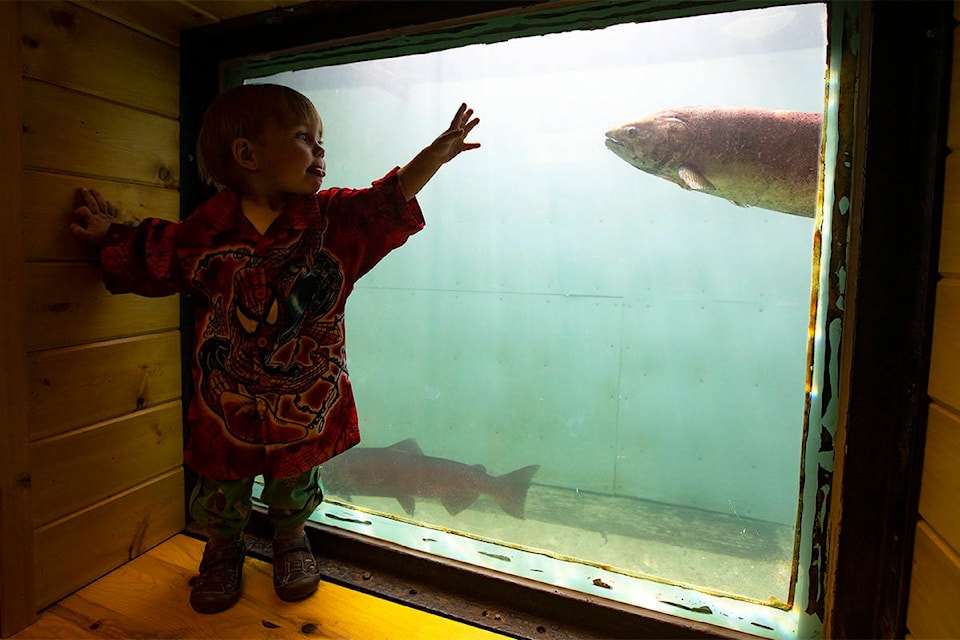The 2020 run of Chinook salmon on the Yukon River is forecasted to be slightly smaller than last year’s, according to a report from the Yukon River Panel.
Between 59,000 and 90,000 Canadian-orgin Chinook are expected to make the journey from the Bering Sea and up the Yukon River.
That’s compared to the 69,000 to 99,000 forecasted last year.
Preliminary estimates have pegged the actual run at 72,620 fish, with only 42,052 making it to their spawning grounds.
That was below even the lower end of the interim management escapement goals, which remains the same this season at between 42,500 to 55,000 fish.
In an interview April 30, Yukon Salmon Sub-Committee executive director Elizabeth MacDonald said the 2020 forecast “isn’t too concerning” yet due to the large confidence interval around such early predictions.
Last year, she noted, far more fish than forecasted actually entered the mouth of the river, although a number of factors, including record-breaking warm water temperatures and overfishing on the Alaskan side led to a much smaller number of fish actually making it into Canadian waters.
MacDonald said no formal management plans have been put forward yet; it’s still too early.
However, like many aspects of life, the COVID-19 pandemic has also changed the salmon-management world.
“I think the COVID-19 is actually having more of an impact on what’s going to happen than the pre-season forecast,” MacDonald said of management planning.
The Yukon River Panel didn’t hold its usual pre-season meeting this year, which typically brings together representatives from both sides of the Alaska-Yukon border for a few days’ worth of presentations and discussions before the salmon runs begin.
The pandemic has also introduced some uncertainty on whether all the usual in-season assessment projects, many of which are based in or near small, remote communities, will actually happen this year, particularly on the Alaskan side.
Scientists and technicians travel into these communities to install and monitor the sonar systems that count fish during the season, MacDonald explained, and this year, some communities are concerned they could bring the coronavirus with them. While researchers have permission to continue with monitoring activities in Eagle, an Alaskan town near the Canadian border that serves as a key point for collecting data on how many fish will enter Canada, MacDonald said it’s not certain yet whether there’ll be a sonar station at Pilot this year.
The Pilot sonar is located near the mouth of the Yukon River and gives the first indication of how large a run is, and how fast it’s coming in. The numbers recorded at Pilot are used by Alaskan officials to make in-season management decisions — when to open fishing, how many fish can be taken — that ultimately impact how many fish make it into the Yukon and to spawning grounds.
On the Canadian side, Fisheries and Oceans Canada, the federal department that handles Chinook management, is considered an essential service, so in-season assessment projects are expected to mostly continue as usual (it’s uncertain at this point whether the Whitehorse fish ladder will be open to the public).
MacDonald said officials are expecting larger subsistence harvests to happen in both Alaska and the Yukon this year, due to COVID-19 and the concerns around food security it’s raised, particularly in remote communities supply planes may no longer be flying to.
At this point, though, it’s too early to say how or when the harvests will take place.
“So this year, it’s unknown what we’ll see but what I’ve been hearing on both sides of the border is that they’re going to kind of enter it the same as they did last year, being precautious … and then waiting to see what the in-season numbers will be,” MacDonald said.
Contact Jackie Hong at jackie.hong@yukon-news.com
